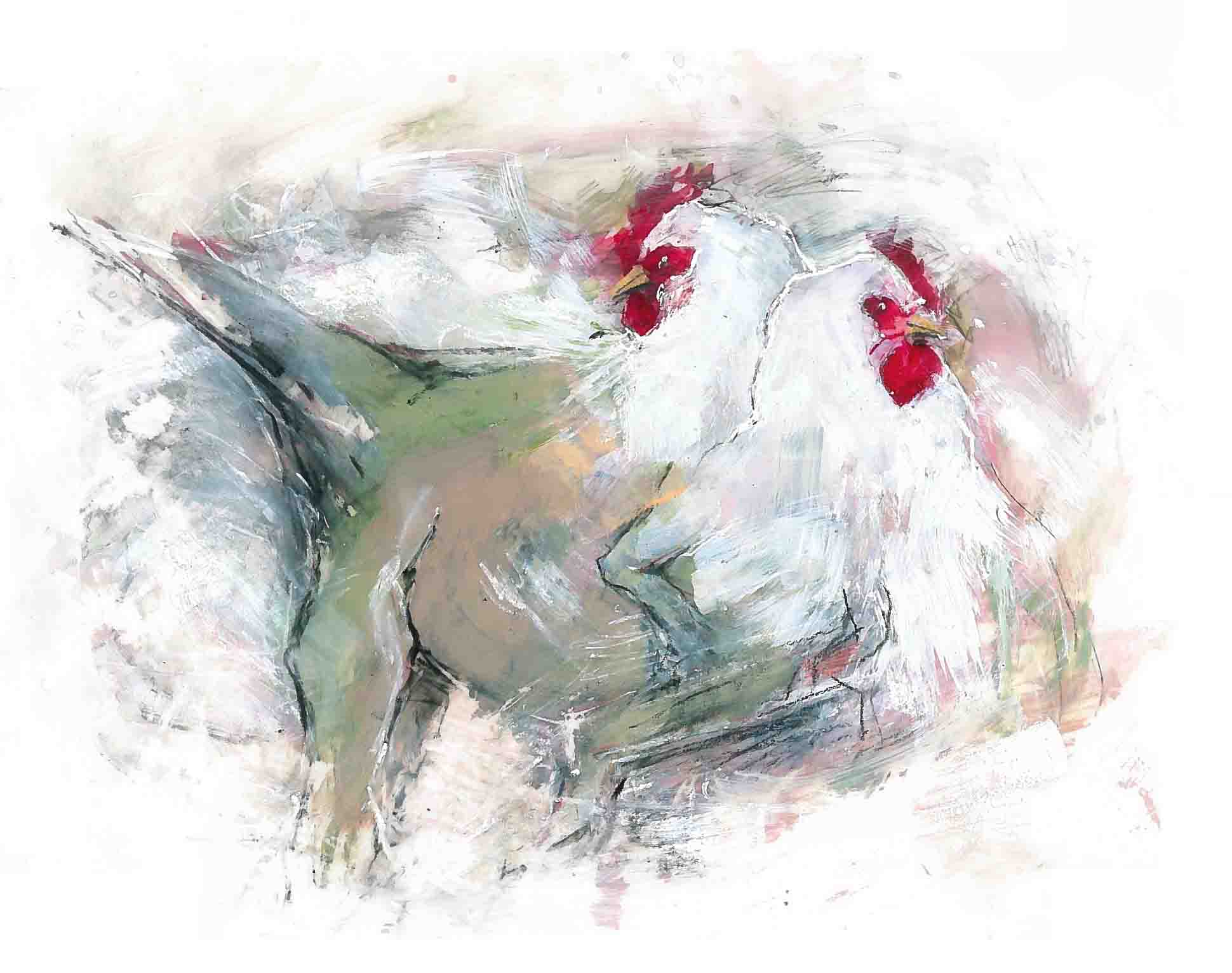Instead of building a time machine to travel back to prehistoric times, scientists might be able to engineer dinosaurs out of chickens to live in our own backyards. In a study published this past January in the Journal of Organic Evolution, researchers were able to genetically modify chicken embryo legs to resemble that of tetrapod dinosaurs—specifically the Archaeopteryx and the Pygostylia—the ancestors of modern birds.
Archaeopteryx and Pygostylia—and many other dinosaurs—were already thought to have strongly resembled birds, and even had feathers. Modern bird legs are composed of two bones, side-by-side, the tibia and the fibula. The fibula of a modern bird is about two-thirds the length of the tibia, whereas in tetrapod legs, both bones are the same length. This discrepancy in bone length, the researchers believed, was primarily due to a negative feedback loop caused by interactions between proteins from Indian hedgehog (IHH) and Parathyroid hormone-related (PTHrP) families. This would ultimately lead to a shortened fibula.
“The secreted protein Indian hedgehog (IHH), [plays] an important role in [bone formation],” the paper explains. “IHH also stimulates the production of Parathyroid hormone-related protein (PTHrP) [which hinders] the production of IHH. This function controls the differentiation of cartilage producing cells in the growth plate of the bone, and eventually stops the growth of the fibula when it is very short.”
However, reduced growth of the fibula is only part of the reason for the discrepancy. The researchers also suggest that the detached epiphysis (growth plate) contributes to a shorter fibula.
“The earliest birds to show fibular reduction have a splinter-like distal end […] suggesting disruption of the growth plate,” the paper reads.
In order to create this larger fibula in the chicken embryos, the IHH protein was inhibited by injecting a solution containing Cyclopamine—an inhibitor of the IHH signaling pathway—into the amniotic cavity of the embryos. This would then stop the negative feedback cycle.
The paper explains that in tetrapod dinosaur embryos, ossification (cartilage hardening into bone) occurred much later than it does in modern bird embryos. Cyclopamine also delays the solidification of cartilage cells and keeps the growth plate attached to the fibula, meaning that the bones are growing for a greater period of time, allowing them to be longer.
While just a small change, the inhibition of one protein can reverse millions of years worth of evolutionary changes. In a previous study, published last April in the Journal of Organic Evolution, researchers reverted the beaks of modern day bird embryos to their ancestral palate. Although none of the birds in either of these studies reached the hatching phase, the studies demonstrate the increasing capacity of scientists to reverse the complicated processes of evolution, which—who knows—may eventually result in a real-life Jurassic Park.









